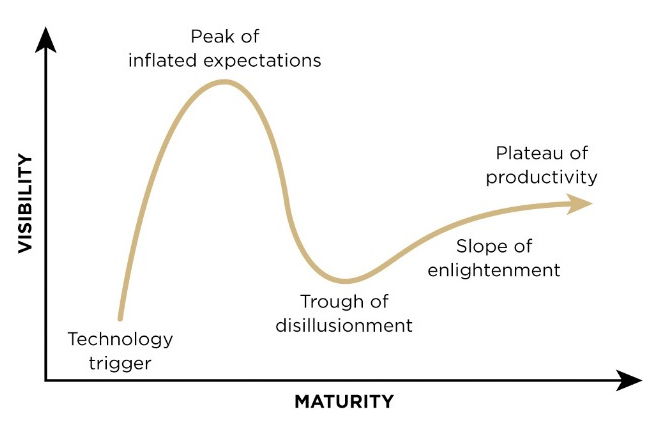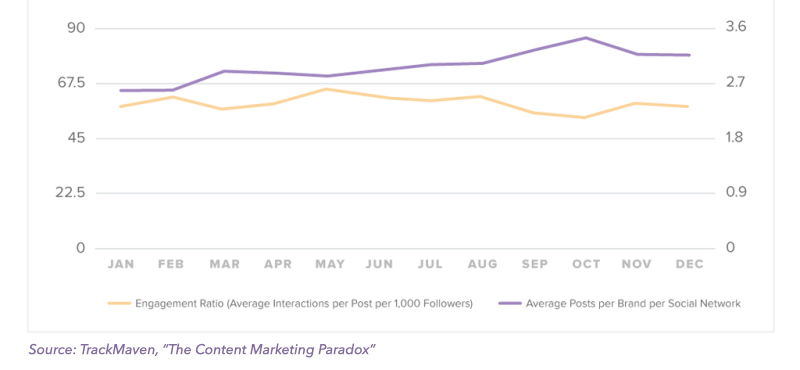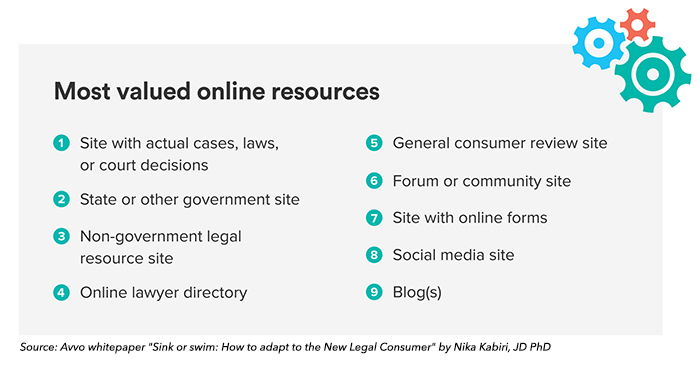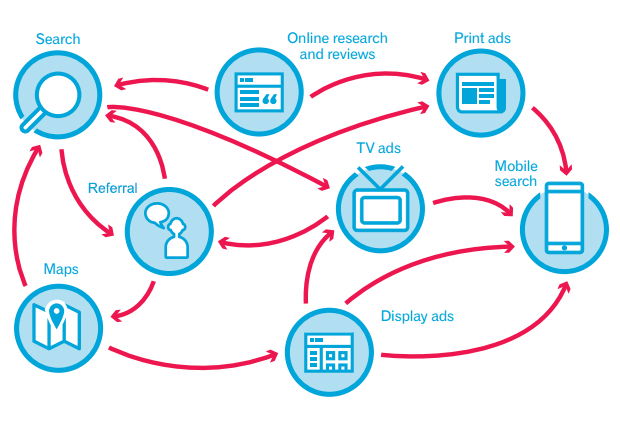Lift Off: How to Produce Content that will Rise Above the Competition
BY Kristen Friend

LISTEN
Content marketing has been a hot topic for years. So much so that some marketers now argue we are approaching peak content.
Peak content is the point at which people simply can’t consume all of the content — articles, social media posts, videos, ads, infographics, etc. — that is being produced. Peak content is a point of maximum content production. It is based on the theory of Peak Oil, which supposes that inevitably the world will reach a point of maximum oil extraction and will then face an inevitable decline.

With all the content noise out there, how can you compete? Should you even try?
In the content world, production teams are strapped. A finite number of people are creating content, and they simply cannot produce any more. And companies cannot hire more people to help with the load indefinitely. A ceiling exists.

Conversely, as marketers and journalists continue to churn out content, consumers cannot read, watch or listen to any more. Content keeps being produced, but audience engagement is staying consistent — or in some cases beginning to decline. The number of hours in a day are static. The idea that these hours will fill to the point of bursting is inescapable.
Attorneys are competing with big brands that have big marketing budgets. They are up against companies with retail products that lend themselves to informational content, like REI’s expert advice website, which offers tips for all things outdoors.
While this environment may seem daunting, attorneys must add their voices. Giving up completely on content will only give your competitors an advantage. Google rewards websites that offer useful and original information. The key is understanding how to participate to get the maximum return on your time and monetary investments.
Less is more
While it may not seem obvious, attorneys are a natural fit for content marketing. Research is a big part of the buying process for legal services, and prospective clients may look to professionals as sources of information. Studies of legal consumers have shown that they are thirsty for information, often looking directly at source materials like published laws and government websites. These consumers are not looking for generic content that tells them how complex the legal process can be. They are looking for facts and answers. As an attorney, you have a wealth of experience and knowledge from which to draw. Put it to use. Write and post content that answers questions and builds trust with this audience of knowledge seekers.
Attorneys have a lot to offer those researching a legal issue, but it is unrealistic to ask law firms to become high-volume publishers. Marketing and business development help sustain a healthy practice, but at some point spending more time on promotion yields diminishing returns. To compete in the content marketing game, attorneys must focus on quality, not volume. Here are five ways your firm can ensure it is producing content with maximum impact — and maximum lead-producing potential.
1. Do your research. 
You can doom your efforts to obscurity before you have written a word if you ignore research. To produce content people want to consume, share and link to, you have to know for whom you are writing and what problems you are solving.
You can break your research into parts, each of which addresses one aspect of content writing. You will need to explore your audience, or the who. Additionally, you will need to research topics, or the what. These areas of research go hand in hand; you audience will influence your topics, and to some extent your topic choices will determine who reads your content. One really cannot work without the other.
The who: audience research
Your website visitors are real people, and they should come first.
Develop client personas, or detailed descriptions of the individuals who will use your legal services. Imagine these people as actual human beings, not abstract demographics. What are their values and goals? Do they have any hobbies? Where did they go to school, and to what level of education? What are their main concerns or frustrations? What publications would they read? What websites?
Create two to four thorough bios that represent your website visitors. Name your personas. Give them jobs and responsibilities. Give them families, pets. When you consider a new content idea, imagine how each person would react to it. Would they care? (Hint: They’d better!)
The what: topic research
Your experience is one of your best sources for topic ideas. Chances are you receive many of the same questions from your clients. Others likely share many of the same concerns. You can tap into your intrinsic knowledge about past client issues to produce pieces that address these concerns.
Online tools are also available help with research and idea creation. Google Trends is a good place to start. Trends lets you analyze the popularity of any search term, and it suggests related keywords. For insight into social trends, try BuzzSumo. Simply enter a topic — like one of your practice areas — to see what related content is popular and is being shared, and across which networks.
2. Include details.
Content that incorporates deep research and analysis about a specific topic tends to perform well in search results. This type of content also gets shared more often. Producing one quality long-form piece or posting an answer to one common question per month may be better than writing several short, but less substantive, blog posts a week.
When thinking about topics, dig deep into a particular niche. If your firm practices in more than one area, focus on one at a time. Find facts and statistics. Quote laws when applicable. Try doing some searches for your firm’s keywords to see what others are writing. Then, brainstorm on ways you can approach these topics from a different angle. Do not be afraid to offer commentary or provide examples of how some cases may be handled. Trust yourself; you will know if you are crossing an ethical boundary. And don’t underestimate your readers; they are hungry for knowledge and will trust you if you can provide it.
But if I say too much, won’t people will think they don’t need to hire an attorney?
Evidence actually points to the opposite: if you say too little, people will think they don’t need to hire you. When people are facing a legal problem, 85 percent go online weekly to try to solve it. Of the people who go online for legal-related questions, only 31 percent are online researching a lawyer. And one in five of these people believe that with enough research they can know as much as a lawyer. You need to provide valuable information to reach these people — otherwise they might assume they know more than you do.
3. Speak directly to visitors and prospective clients.
People go through several stages when hiring an attorney. These include (in no particular order):
Recognizing the need for a service
Performing initial research
Performing final research
Purchasing/hiring

For better or worse, the consumer journey is no longer a linear path that begins with the awareness of a need, moves to research and finally ends with a purchase. The path is now considerably more chaotic. Consumers do not follow a clear pattern; they look at mix on online and offline sources and when online are often pulled in unexpected directions due to their ability to simply follow one link to another
and see where research leads them.
Now, a legal consumer may have knowledge of a potential solution before he or she becomes aware of the need for an attorney. This person may try to resolve the issue without the assistance of a professional. In fact, one in five people interested in legal services believe that with enough research, they can have the same level of knowledge as an attorney.
To grab as many people as possible, offer a variety of types of content, each of which address the needs of people at various points in the process. For example, some people will have researched the law, but not how attorneys work with the law. These consumers may want process-based articles and presentations. Other searchers will want answers to detailed questions. This is where you can draw from your experience with clients to produce an ebook guide or a video that addresses a specific topic, in some depth.
4. Address pain points.
When your content solves a problem, it communicates directly with people who are looking for a resolution and who are therefore most likely to take action. Engagement is great, but a lawyer cannot survive on likes and shares alone. You need leads and clients. Some possible pain points include:
Solving a financial problem
Freedom or driving privileges
Taking care of a family member
Overcoming a business challenge
Ask your clients about their biggest concerns to help expose pain points relevant to your practice. Then, when writing about these concerns, provide actionable steps for eliminating them. Do not give all the answers, but do include language that encourages people to contact you for a more complete analysis of their particular issue.
5. Promote.
Producing content without a plan for promotion is a waste of time and money. A combination of social sharing, outreach and link building is best. Try some of these methods:
- Send updates about new content to your email list
- Schedule multiple posts about a single piece of content over time with a social media management tool like Hootsuite or Buffer
- Share the content with groups you are a member of on LinkedIn
- Repurpose the content for other formats, like SlideShare, or post a video discussing the topic with a
link to the original piece - Contact people who have shared similar content and ask them to read (and share) yours
- Contact any sources you used for information or any people you have featured in a piece of content
and tell them about it - Encourage clicks by creating engaging images to share along with the content
You can compete with the big brands and use content to build awareness and produce leads. But you can’t do it without focus. Draw from your experience, showcase your strengths and provide something of value to people who need it.
LATEST STORIES



